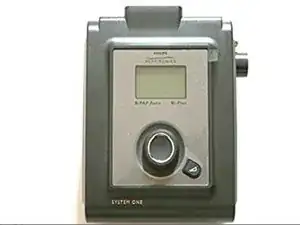Background
This device is designed to alert clinicians to changes in airway pressure that may indicate a problem with the patient's breathing or the mechanical ventilator. To ensure the safety and effectiveness of mechanical ventilation for people with respiratory failure or other breathing disorders, the Respironics Pressure Alarm is important. By alerting clinicians to changes in airway pressure, this device helps ensure that patients receive the appropriate level of support and that any problems with the ventilator are quickly addressed.
The Respironics Pressure Alarm has several key features, including customizable alarm settings, audible and visible alarms, and compatibility with a variety of respiratory devices. With simple controls and a solid build, the device is also made to be simple to operate and maintain. Pressure alarms have some recognized failure modes over time, including sensor failures, wiring problems, and software errors. These issues may lead to false alarms and an inability to recognize pressure changes. Respironics Pressure Alarms haven't been subject to any significant recalls in recent years, however, the business has occasionally released service bulletins or advisories to address certain problems or offer maintenance advice.
Identification
Respironics is a medical device company that produces a range of respiratory therapy equipment, including Respironics Pressure Alarms. Their Pressure Alarm devices are known for their accuracy and reliability, and they are widely used in the medical community.
The Respironics Pressure Alarm typically consists of a pressure sensor, an alarm, and a display screen. The pressure sensor measures the air pressure delivered to the patient, and the device compares this pressure to a set range or threshold. The warning is set off if the pressure varies from this range, alerting medical professionals that they should check and modify the ventilator settings.
The model number of the Respironics Pressure Alarm is normally found on a label attached to the item and can be used to identify it. The user guide or other paperwork for the device may also include a listing of the model number. The Respironics PM1000, a portable, independent device made for usage in hospitals and other healthcare settings, is one popular model of the Respironics Pressure Alarm. The PM1000 has a small footprint, an easy user interface, and programmable alarm settings.
Specifications
- Mode of Operation: Auto Bi-PAP or Fixed Bi-PAP
- Warranty: 2 years
- Special User Features: Bi-Flex; lighted LEDs
- Pressure Range: 4-25cm
- Ramp Time: 0-45 minutes (5-minute increments)
- Starting Ramp Pressure: 4 to EPAP; patient adjustable
- Device Set-up: LCD/control wheel/push button
- Data Storage Capacity (Min): 7- and 30- day average, SD Card: > 1 yr., On board: up to 6 months
- Data Storage Content: Usage, AHI, Leak
- Compliance Meter: Breathing Detection
- Altitude Compensation: Automatic
- Electrical Requirements: 100 – 240 VACS
- Humidifier: Integrates with System One Heated Humidifier (DS6H) and/ or System One Heated Tube Humidifier (DS6T)
- DC Power: DC Cable available for purchase
- AC Power: 100-240 VAC
- Actual Weight: 3 lbs.; 1.36 kg
- Travel Sized: 7″ x 5.5″ x 4″; 18cm x 14cm x 10cm
- Sound Level: 2.6 db. (no humidifier; CFlex 0) to 4.2 db. (with humidifier; CFlex 3)
- International Part Numbers: IN761S
Additional Information
- American Association for Respiratory Care: This website has all the detailed information related to ventilator alarm safety and the ways to identify the patient safety risk associated with ventilator alarms
- News Medical Life Sciences: It explains the importance of pressure sensors in positive airway pressure (PAP) machines. It also explains sleep apnea, a serious sleep disorder that occurs when a person’s breathing is interrupted while sleeping.
- Machine Repair Guide: If there is a situation where the machine is broken, this page has answers to more than fifty questions related to the device and several ways to fix the problem.
